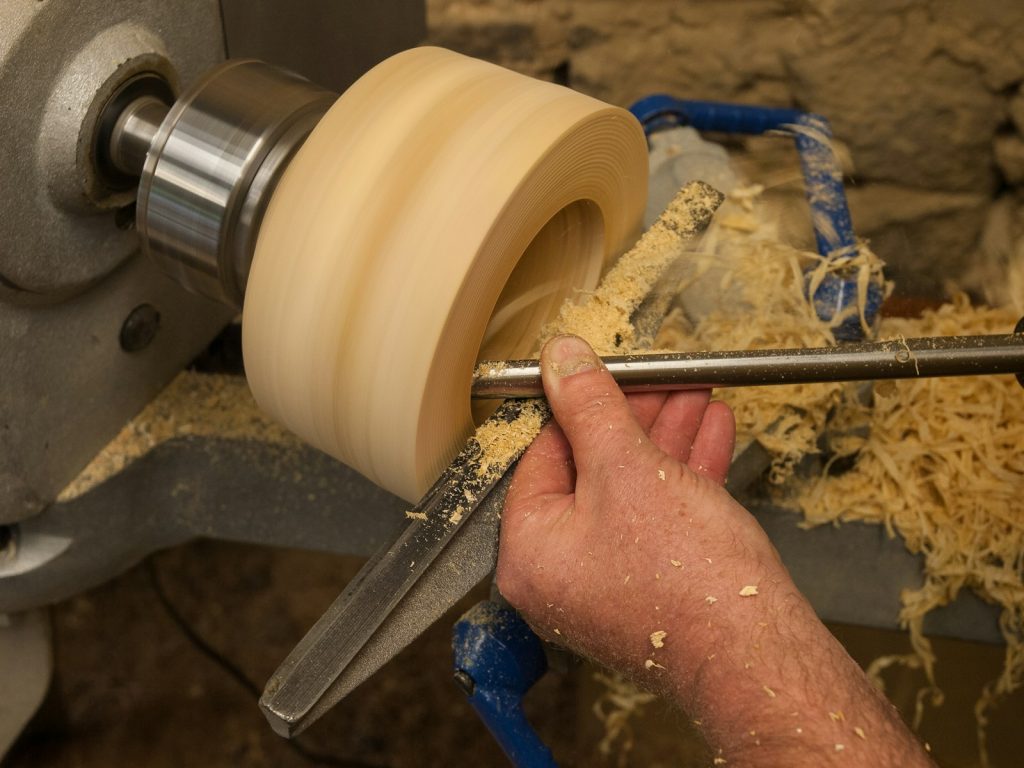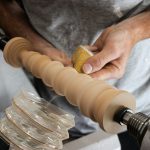Title: The Best Woods for Woodturning: A Comprehensive Guide
Woodturning is an art that depends heavily on the materials you choose. Whether you’re a beginner just learning the craft or an experienced woodturner working on advanced projects, picking the right wood is crucial to the success of your creations. In this guide, we’ll take you through the best woods for woodturning, covering hardwoods, softwoods, and even exotic options to consider for special projects.
1. Maple
- Why It’s Great: Known for its exceptional stability and fine-grain pattern, maple is a favorite for various woodturning projects.
- Ideal Uses: Bowls, plates, and decorative pieces.
- Types to Consider:
- Hard Maple: Extremely durable, making it great for functional items like kitchen utensils and furniture parts.
- Bird’s Eye Maple: Prized for its beautiful, unique grain pattern, perfect for decorative items.
- Curly Maple: Known for its stunning figure, it is ideal for showpieces.
2. Cherry
- Why It’s Great: Cherry wood has a moderate hardness and a rich reddish-brown color that deepens over time, giving your finished piece a timeless look.
- Ideal Uses: Small boxes, decorative bowls, and furniture components.
- Note: Cherry is relatively easy to turn and finishes beautifully, making it a top choice for beginners and experts.
3. Oak (Red and White)
- Why It’s Great: Oak is strong, durable, and has a prominent grain that adds character to your projects.
- Ideal Uses: Table legs, architectural elements, and large bowls.
- Note: Oak can be tricky for beginners because of its open-grain structure, which may cause tear-out if not handled carefully.
Softwoods for Learning
1. Pine
- Why It’s Great: Pine is affordable, easy to source, and ideal for practicing basic turning techniques.
- Ideal Uses: Practice pieces, spindle work, and basic shapes.
- Note: Pine can tear out easily due to its softness, so it’s best used for learning rather than creating long-lasting items.
2. Cedar
- Why It’s Great: Cedar is naturally resistant to decay and emits a pleasant aroma while turning, making it a pleasure to work with.
- Ideal Uses: Small boxes, outdoor projects, and decorative items.
- Note: Cedar is softer than most hardwoods, so it’s perfect for beginners looking to develop their skills on softer materials.
Exotic Woods for Special Projects
1. Cocobolo
- Why It’s Great: This dense hardwood features striking color variations and a smooth finish, thanks to its natural oils.
- Ideal Uses: Pen turning, small decorative pieces, and detailed work.
- Note: Cocobolo can cause allergic reactions in some individuals, so be sure to use proper protection when turning this wood.
2. Purpleheart
- Why It’s Great: Known for its vivid purple color and hardness, Purpleheart is perfect for adding unique accents to your projects.
- Ideal Uses: Decorative bowls, accent pieces, and mixed-wood projects.
- Note: Purpleheart can be challenging to turn due to its density, so it’s better suited for those with some experience.
Tips for Choosing the Right Wood
- Consider Your Skill Level
- Beginners: Start with medium-density hardwoods like cherry or maple.
- Advanced: Experiment with more exotic and challenging woods like Cocobolo or Purpleheart.
- Match the Wood to Your Project
- Small items like pens and boxes: Opt for dense, fine-grained woods.
- Large bowls: Look for woods with consistent density like maple or oak.
- Outdoor projects: Choose naturally weather-resistant woods like cedar.
- Balance Cost and Availability
- Practice on affordable woods like pine before moving on to more expensive materials.
- Use exotic species for special projects or when you want a distinctive look.
Safety Considerations
- Always wear proper respiratory protection, as wood dust can cause allergic reactions or respiratory issues.
- Research each type of wood you plan to use, especially exotics, to avoid harmful allergic reactions.
- Store wood in a cool, dry place to prevent warping and cracking.
Conclusion
The best wood for woodturning depends on your experience, project requirements, and personal preferences. Starting with easier-to-turn woods like maple or cherry can help you build confidence and skill while experimenting with more exotic woods will elevate your craft.
Woodturning is more than just shaping wood—it’s about understanding the unique qualities of each species and bringing out its natural beauty. Whether you’re turning a simple bowl or crafting an intricate decorative piece, choosing the right wood will enhance the joy and satisfaction of your project.
Ready to start your next woodturning project? Let us know which wood you’re excited to try in the comments below! Happy turning!


